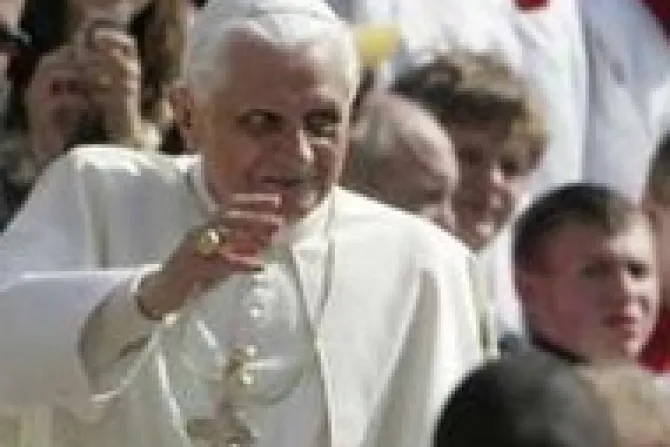Vatican City, Apr 11, 2007 / 08:28 am
More than 50,000 people crowded into St. Peter’s Square this Easter Wednesday to attend today's general audience. The Pope, who arrived by helicopter from his residence in Castelgandolfo, dedicated his catechesis to the Easter Octave.
After reiterating his best wishes for Easter to the faithful, Benedict XVI spoke of Jesus' various appearances following His resurrection. "Also for us," he said, "they represent an invitation to enter more deeply into the Easter message ... and to follow the spiritual itinerary of the people who met Christ and recognized Him in those first days."
The Pope then recalled how St. John and St. Peter, after Mary had given them the news of the resurrection, had run to the tomb each trying to arrive there first, and he highlighted how for the Fathers of the Church this race towards the empty tomb represented "the one form of legitimate competition between believers: zeal in the search for Christ." Referring to Mary Magdalene, the Holy Father pointed out how she recognized Jesus "when He called her by her name."
“We too, if we seek the Lord with a simple and sincere heart, will find Him. Indeed, He Himself will come out to meet us ... He will call us by name ... He will draw us into the intimacy of His love." Like the Apostles, "we are called to be witnesses to the death and resurrection of Christ. We cannot keep the great news to ourselves, we must spread it to the entire world."
"If the Apostles had Jesus at their table," said the Pope recalling the supper at Emmaus, "then we have Him in our hearts." Of course, Benedict XVI explained, "when the sacred author tells us that Jesus appeared alive, this does not mean that He returned to his old life, as Lazarus had. The Easter we celebrate ... is a 'passage,' not a 'return.' Jesus did not go back to His earlier condition, He crossed a frontier to a more glorious, new and definitive condition."
When Jesus tells Mary Magdalene "do not detain me because I have not yet ascended," said the Pope, these words seem to contrast with the invitation to Thomas to put his finger in Jesus' side to ensure He was alive. "In fact, though, there is no contrast between the two episodes, on the contrary, one helps to understand the other. Mary Magdalene would have wished her Master as He was before, seeing the cross as a dramatic interlude best forgotten. Now, however, there was no longer any place for a merely human relationship with the Risen One. To meet Him there was no turning back, but the creation of a new relationship with Him." And Christ showed His wound to Thomas, "not to forget the cross but to make it unforgettable. ... The mission of disciples is to bear witness to the death and resurrection of their Master and of their new life."


